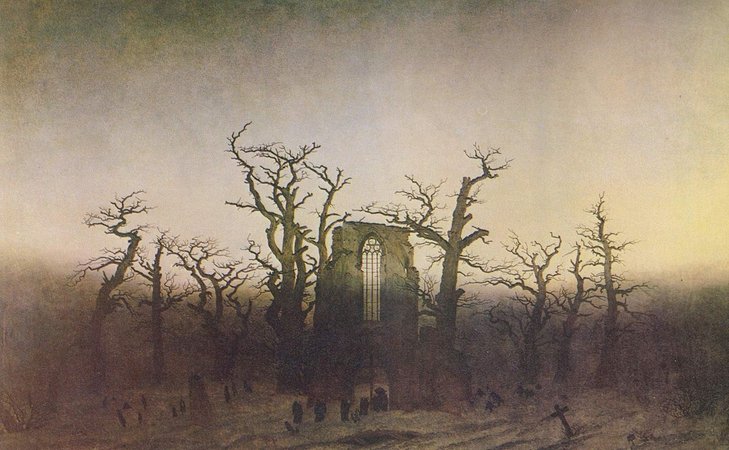2.5 Romanticism, Regency & Revivals
Originating in Europe, Romanticism was an 18th-century artistic, literary, musical, and intellectual movement and in most areas was at its peak in the approximate period from 1800 to 1850. Romanticism was characterized by its emphasis on emotion, individualism as well as nostalgia for the medieval past and nature. The movement was partly a reaction to the Industrial Revolution, the aristocratic social and political norms of the Age of Enlightenment, and the scientific rationalization of nature—all components of modernity. It was embodied most strongly in the visual arts, music, and literature, but had a major impact on historiography, education, and the social sciences. It had a significant and complex effect on politics, with romantic thinkers influencing liberalism, radicalism, conservatism and nationalism.
The movement emphasized intense emotion as an authentic source of aesthetic experience, placing new emphasis on such emotions as apprehension, horror and terror, and awe—especially experienced in confronting the new aesthetic categories of the sublimity and beauty of nature. It elevated folk art and ancient custom to something noble, but also spontaneity as a desirable characteristic (as in the musical impromptu). In contrast to the Rationalism and Classicism of the Enlightenment, Romanticism revived medievalism, and elements of art and narrative were perceived as authentically medieval in an attempt to escape population growth, early urban sprawl, and industrialism.
Although the movement was rooted in the German Sturm und Drang movement, which preferred intuition and emotion to the rationalism of the Enlightenment, the events and ideologies of the French Revolution were also proximate factors. Romanticism assigned a high value to the achievements of “heroic” individualists and artists, whose examples, it maintained, would raise the quality of society. It also promoted the individual imagination as a critical authority allowing freedom from classical formal elements in art. –
Excerpt from The Romanticism Movement ~ The Ideal Vehicle of Poetry (https://boisestate.pressbooks.pub/thecreativ espirit/chapter/chapter-8-romanticism/)

Romantic painting is concerned with medieval formal elements, but with the inclusion of social commentary, emphasis on the emotions, and inspiration is drawn from literary works, as well as newsworthy discussions. The style did not take the place of the neo-classical style, but it was a very important aspect of mass culture and because of this it encouraged people to be critical of their positions in life, and with the government or others in power. It influenced everyday people to question their lives and those around them.
German landscape painter, Caspar David Friedrich explored the ideas of the sublime in his works. Depicting a nostalgia for the past, but a past in ruin — much like the medieval image of the Abbey in the Oakwood, a ghostly remnant of its former architectural and theoretical glory.[1] Known in the study of art history as German Romanticism, painters like Friedrich attempted to bring to public consciousness the necessity for spiritual contemplation in a fast-changing society. Focusing on the emotive qualities of sublimity, Friedrich encourages his viewers to fully experience the sense of awe only accessible when questioning the existence of life itself.
Composers working within the Romanticism era were also exploring the effects of sacred exaltation. Accordingly, art historians describe this sonic effect as, “romantic music expressed the powerful drama of human emotion: anger and passion, but also quiet passages of pleasure and joy.”[2] One of the most famous Romantic compositions is Nocturne, Op 9 by Polish composer Fredrich Chopin.
Listen to this piece here:
Additional resources:
Romanticism on The Metropolitan Museum of Art’s Heilbrunn Timeline of Art History
Romanticism as a literary movement from Mount Holyoke College
From NPR: The ‘Ode To Joy’ [Beethoven’s Ninth Symphony] As A Call To Action
Explore Freidrich’s art on Google Arts & Culture Website
Women and Romanticism
READ:
John Pile, and Judith Gura. History of Interior Design. Wiley, 2014. https://archive.org/details/HistoryOfInteriorDesign/mode/2up
***Chapter 11 pages 233-240***


